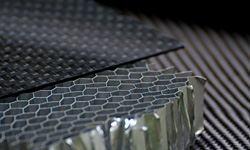Ceramic Nanoparticle Antioxidants and Aging June 2019
Want more free featured content?
Subscribe to Insights in Brief

Nanoceria—the nanosize ceramic material cerium oxide—displays biomimetic enzyme activity within cells and can support a range of biocatalytic functions. Nanoceria can facilitate multiple reduction and oxidation reactions because of the material's ability to shift between its 3+ and 4+ oxidation state. Research publications demonstrate the efficacy of the nanosystem in alleviating the free radicals—highly reactive unpaired electrons generated by the body from a range of biological processes—that are responsible for damaging cells in oxidative-stress processes.
Researchers from the Italian Institute of Technology—part of the SciSpacE (Science in Space Environment) program funded by the European Space Agency—are investigating the use of nanoceria for removing free radicals from the body to reduce the cellular damage associated with aging and to assist astronauts who are space bound for long durations and have exposure to low gravity and cosmic radiation.
The researchers prepared an incubator containing nanoceria and host cells for the SpaceX CRS 17 mission in order to expose the cells to the conditions in space for six days at 30°C. Researchers will compare the sample with a control sample incubator on Earth to assess any biological benefits nanoceria demonstrates.
Implications
Findings from the experiment will provide insight into the effects that reduced gravity and cosmic rays may have on the biomimetic capability of nanoceria in protecting the cells from cellular damage.
Natural antioxidants—for example, vitamin C and vitamin E—terminate free-radical chain reactions in the body. However, natural antioxidants are nonregenerative and can become depleted without regular replenishment through diet. The ability of nanoceria to regenerate after terminating free-radical reactions could lead to a long-term dietary-supplement treatment that does not require regular replenishing. Such supplements could aid the general population as well as space missions.
Impacts/Disruptions
Low-cost ceramic-antioxidant medical treatments could support the treatment of a range of medical conditions. Treatments may include neuroprotective applications of nanoceria in therapeutic dosages. Additionally, Researchers from multiple institutions in Virginia—including the Virginia-Maryland College of Veterinary Medicine—have previously demonstrated that administration of nanoceria in mice that demonstrate the symptoms of Alzheimer's and Parkinson's diseases preserves neurons and motor functionalities. The impacts of antioxidants also extend to heart disease. Research published by the US National Center for Biotechnology Information reports that prolonged use of pharmaceutical antioxidants are effective at treating atherosclerosis in animal trials. However, more research is necessary to prove the same effect in humans.
Other applications may also exist. For example, the agriculture industry uses large quantities of synthetic antioxidants to preserve animal fats and vitamins in animal feed from becoming rancid through oxidation. However, the European Union banned many synthetic oxidants (for example, ethoxyquin) because of potential carcinogenic factors. Inert ceramic antioxidants could eventually provide animal nutrition with protection from free-radical oxidation.